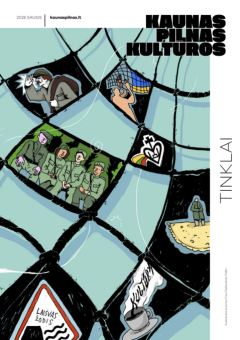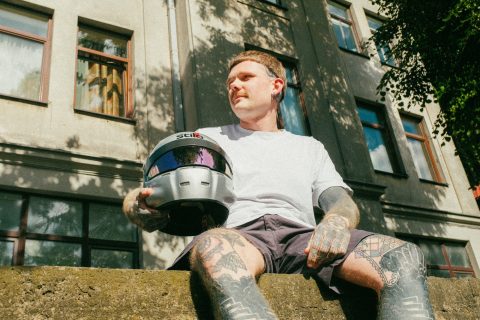Valentinas Mickevičius has been a resident of Kaunas since 1976 and a bus driver since August 26, 1977. This month, he turns 67. “I’m a pensioner, but I’m still working, so what kind of pensioner am I really?” reflects the driver, who has spent his entire career at the same company. Today, the company is called Kauno autobusai, and in 2024, it will mark 90 years on the road.
Unaccustomed to attention – he says he’s only given one interview before, about two decades ago – Valentinas smiles a lot and is modest even when mentioning impressive figures like 1.6 million. That’s roughly how many kilometers he has driven through the streets of Kaunas. That’s about forty times around the planet, almost once for every year of his career. He started driving right after his service in the Soviet army, beginning with a yellow Hungarian Ikarus bus, and he happily agrees to pose in a recently restored one that looks exactly the same.
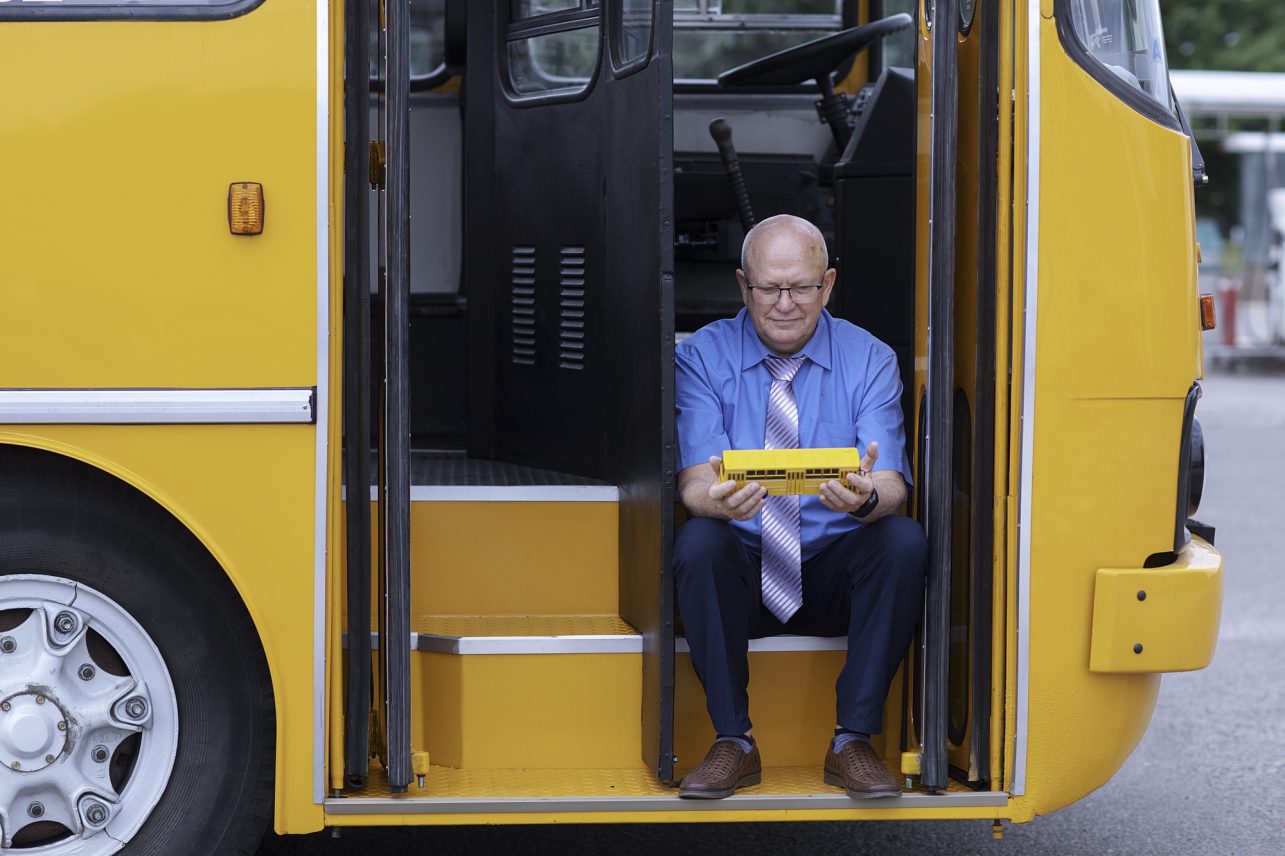
A native of Kaunas for half a century
Valentinas hails from the area around Lake Vištytis, where the borders of Lithuania, Poland, and Russia’s Kaliningrad region converge. “It’s very clean because no rivers flow into it,” he says, offering a potential vacation idea. The driver recalls that he came to Kaunas at the encouragement of a friend, who told him that the bus depot was hiring people with B and C category licenses and that he could obtain a D category license there (this is the right to drive cars intended for transporting passengers and having more than eight seats not including the driver’s seat, ed.). “That’s how I got started. You know, I came here unmarried and was given a dormitory. I’ve stayed ever since,” recalls one of the longest-serving drivers at Kauno autobusai. When asked about his passion for driving – something not everyone enjoys, especially doing it daily on the same streets – Valentinas remembers that he first got into it while serving in the army. For example, he used to drive his superiors around and became very familiar with what is now St. Petersburg from a driver’s perspective, and he simply enjoyed it.
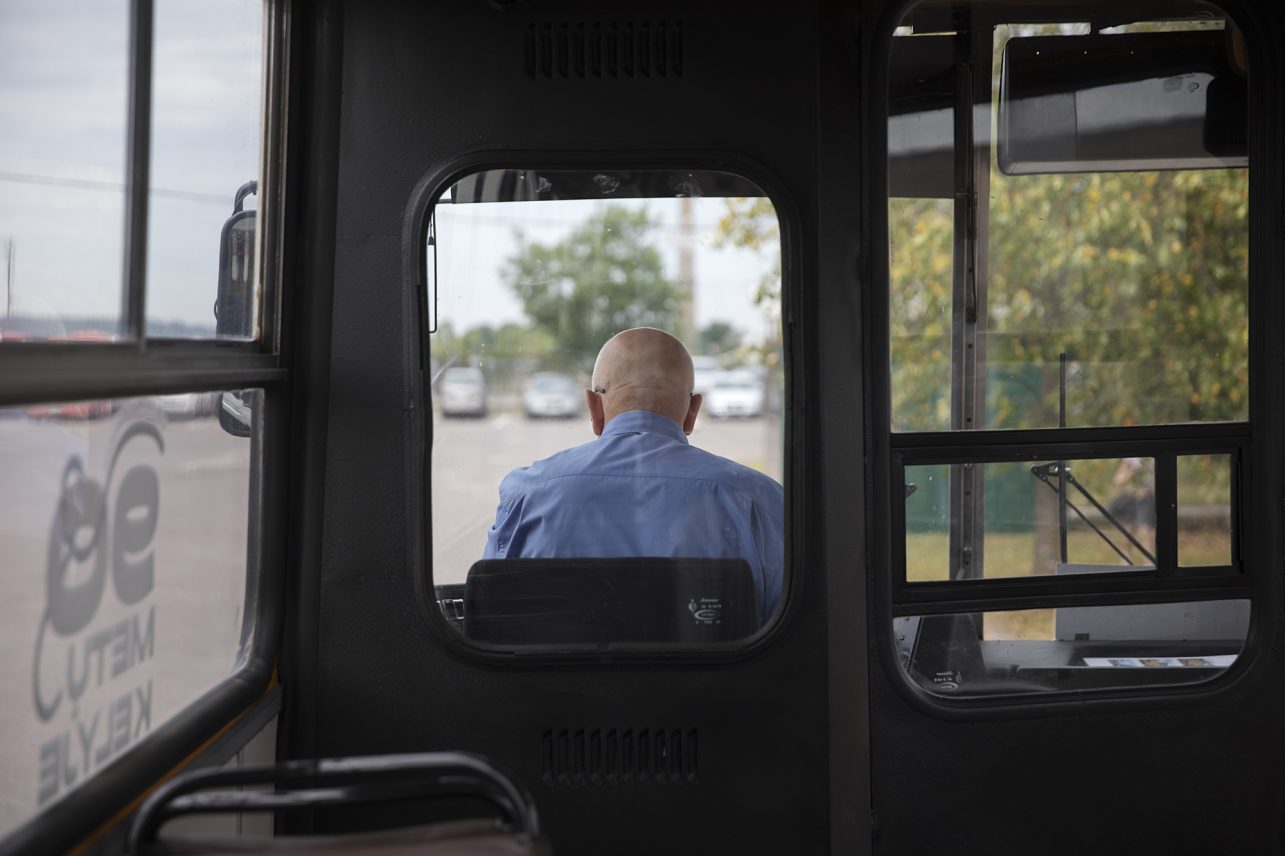
Our hero has been married to his wife, who, by the way, doesn’t drive, for 45 years. We laugh, thinking that perhaps the secret to such a long-lasting relationship is that, in their youth, they both worked in shifts and took turns taking the kids to and from daycare, so they often barely crossed paths at home. “If I work in the morning, my wife works in the afternoon.” Why does the couple still enjoy living in Kaunas today?
“It’s interesting here; there are places to go: the musical theater, drama theaters, 9th Fort, the Lithuanian Zoo,” he names his favorite city attractions. He adds that his workplace invites him and his colleagues to the Kaunas State Musical Theater every year. There are many colleagues – about 500 bus drivers, and around 300 trolleybus drivers. However, such veterans like Valentinas are only a few.
Then and now
“Now the traffic intensity is much higher compared to what it was 40 years ago. Back then, there were fewer cars, and even those were mostly Moskvitch and Zhiguli. In an entire apartment building, there might have been about seven cars. But now – look, every family member has a car, and you can feel it on the streets,” he replies when asked if it was scary to start driving in Kaunas. Indeed, the history of public transport is also the history of the city’s development. Valentinas notes that now it seems as if no one works in Kaunas anymore – the streets are full of cars buzzing around all day long. I quietly think to myself that there are indeed quite a few people in our city working for themselves. Definitely more than back when the main employers were large factories, and the buses were packed to the brim, shuttling workers back and forth. Companies used to operate in two or even three shifts, and the bus schedules were aligned accordingly. On the most popular routes, buses would run every few minutes. “There were times when even then, they wouldn’t all fit – so you’d accelerate then pull over, stop briefly, and the passengers move for the doors to close. You’d ‘compress’ them, as they say. But try and stop like that now.”
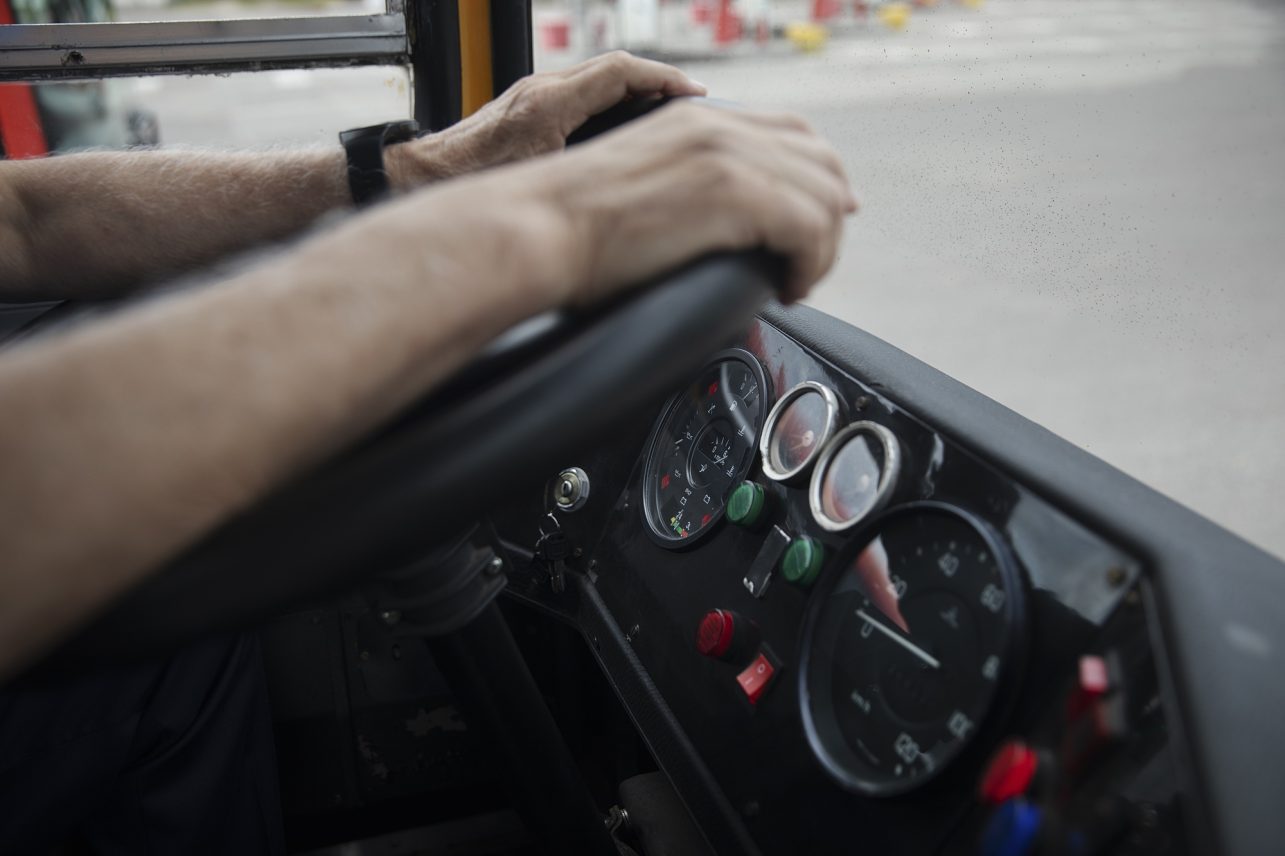
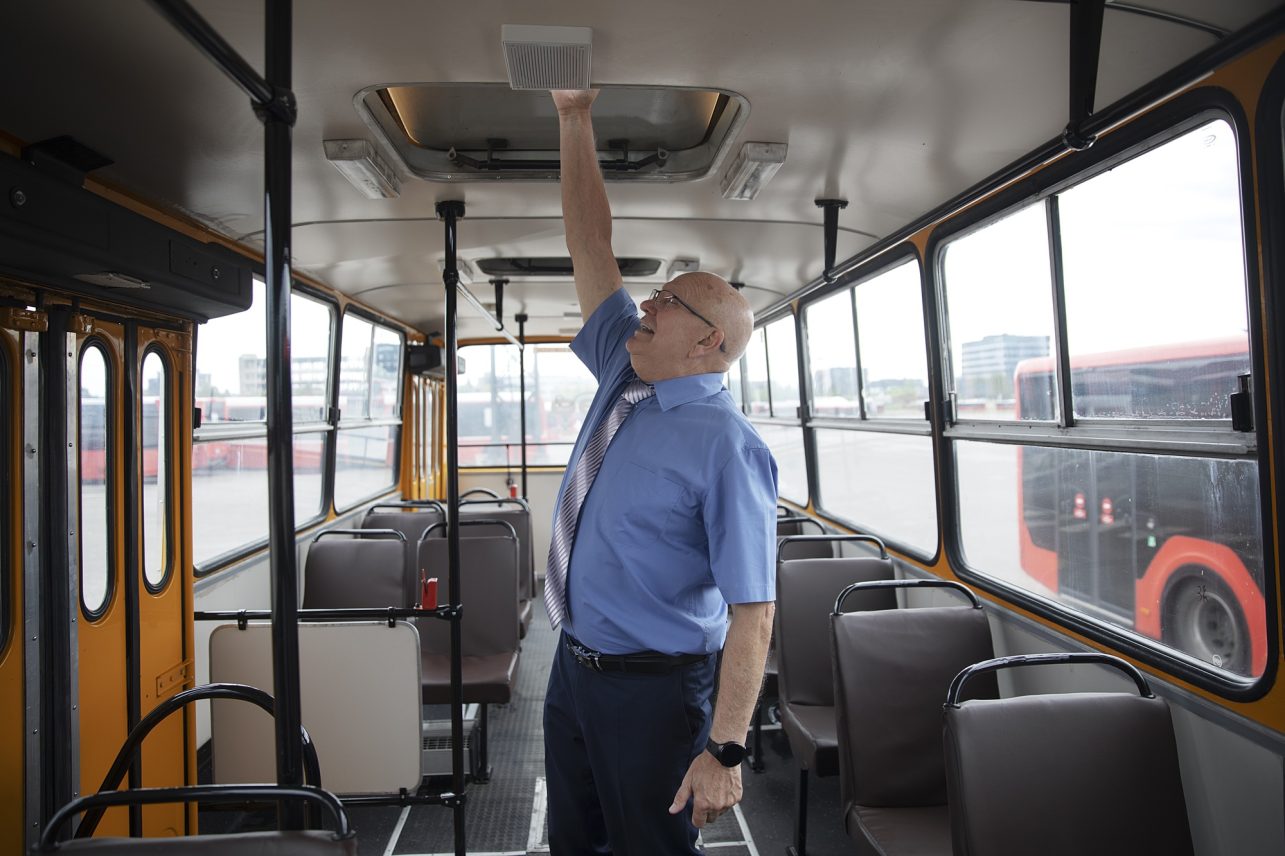
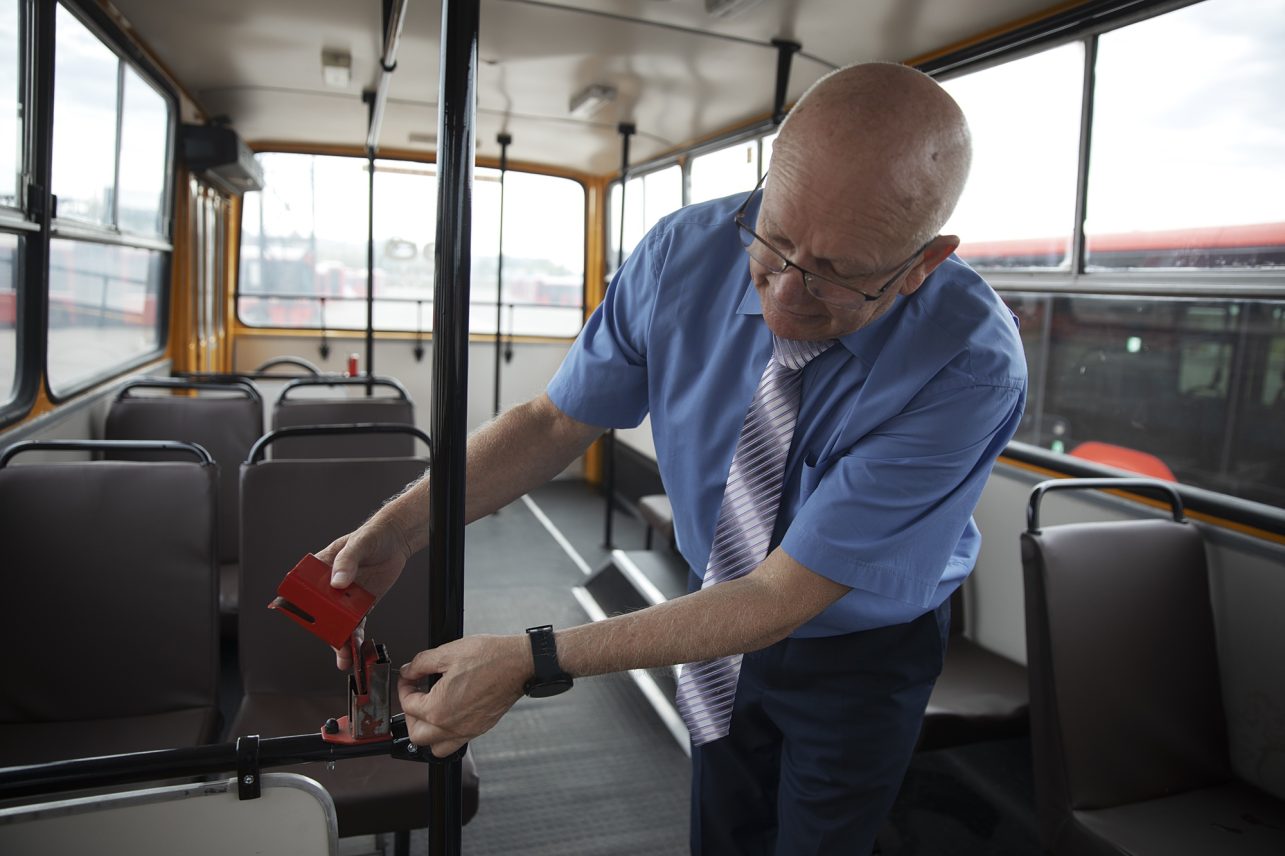
Since he used to drive buses on the same routes – in Valentinas’ case, buses 16 and 23 – he got to know the passengers, “They would come on the bus, greeting me.” He recalled a humorous situation: he put the number 23 on the bus but, for some reason, decided to drive the route of the bus 16. Thanks to one concerned passenger, the situation was corrected. “They asked where the bus 23 was going. I replied: Kaunas Castle to Sargėnai. They said: and where are you going?”
The assigned routes, the bus driver admits, used to make the job monotonous. “Now, when I drive different routes, I see how the city is changing. You notice new neighbourhoods being built where there were once empty fields, now there are semi-detached houses and private homes.”
Have you ever wanted to try intercity work? After all, Kautra is also celebrating its 90th anniversary this year, having grown from the same company founded during the interwar period. “Yes, back then there was just one bus depot. But because of my family and children, I couldn’t transition to long-distance routes. And when the kids grew up, I no longer wanted to. It’s better to stay local, come home every day, and that’s all I need.” However, there’s still a lot of work, there were months when Valentinas worked as much as 280 hours – about 120 more than an average person.
To work with a torch
The first Ikarus buses Valentinas drove were of the 260th model, which was the most popular in the Soviet Union at that time. After four years of such experience, the driver switched to the 280th model, the ‘doubled’ one. As I would put it – the one with the accordion. He drove it with a partner for 16 years. Wait, what’s a partner? “There are two shifts. One person works in the morning, from 4 a.m., and the other in the afternoon, also from 4 p.m. until morning. We drove the bus 16, and we would switch at Kauno pienas or Kaunas Castle.”
It goes without saying that working with the Ikarus was more difficult than the modern Solaris, Van Hool, MAN, Lion’s City, and others. I do not doubt that readers who have recently started driving wouldn’t even know the difference. “There were no automatic transmissions, you had to do it manually. The work was more physically demanding,” Valentinas says. He remembers when, after the restoration of Independence, the park started receiving used Volvos that were called ‘automatic machines’, which made the work much easier.
Another forgotten nuance is the air system. “As the bus ages, the air system starts to freeze. The brakes get pulled, and you can’t drive anymore. You had to make a torch, dip it in diesel fuel, and heat it up… Everything was metal, a simple construction. While passengers were getting on and off, you would fix it. If that didn’t help, you’d call the Bus Depot for help. I learned this from older colleagues, and then I taught it to others.”
Living on a shift schedule
It is difficult to attract younger colleagues to the depot. Why? This job seems so safe and comfortable. “You have to wake up early! Half past two. You drink your coffee, eat a sandwich, and go to work. Drivers are gathered and brought to the bus depot from their stops. And in the evening, you come back late, around half past twelve, if you’re on the second shift. I now do that supervisory work, I collect the drivers in the morning, make two rounds, and collect them from the stops in the evening. Already of retirement age, I chose this option. Little by little, I’m getting ready for real rest,” Valentinas mentions his new schedule, having agreed to meet with us on the day when he only needs to go to work in the evening. He will return home around six in the morning and sleep until noon. His whole life is based on a shift schedule.
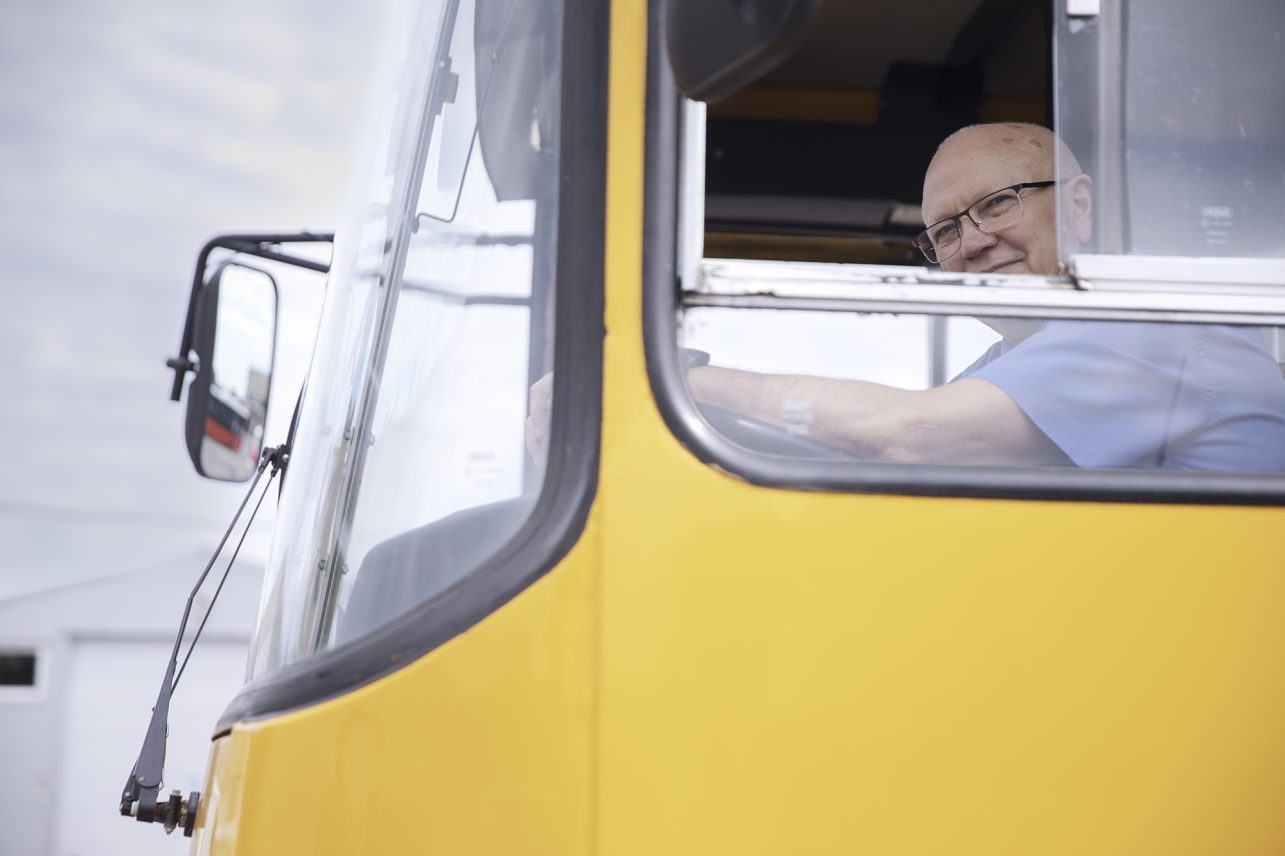
Unfortunately, Valentinas had to work during the Baltic Way, when some Kaunas bus drivers took the townspeople to the assigned sections (and a significant part got stuck in traffic jams), and many other important historical events. He even spent a few New Year’s Eves behind the wheel when there were still night schedules. He says it was romantic – driving alone, listening to the radio, surrounded by fireworks. Only toward morning would the celebrators start piling onto the bus. And what kind of radio did he listen to? Apparently, all sorts. The news is important, but Valentinas also enjoys listening to the music in the cabin, especially lighter Lithuanian tunes. “I’m just not really into metal,” he adds.
A little more about the changes visible through the windshield of the bus. According to our interviewee, drivers these days are more polite. They no longer occupy the bus lanes, except for the occasional one who does so by accident. “After all, there are cameras everywhere now, watching everything,” he notes. “Some of our drivers have even been fined for taking the bus lane while driving their own cars, simply out of habit.” Valentinas himself has received an administrative penalty: for speeding! He decided to test how fast the company minibus could go on Jonavos Street.
When asked about pedestrian culture, Valentinas, one of the most experienced drivers in our city, has some comments. First of all, it’s the headphones isolating people from what’s happening around them. Then, it’s the scooter riders and cyclists, who zoom through pedestrian crossings without dismounting from their vehicles, “Which is not allowed.” Let’s listen to that.
